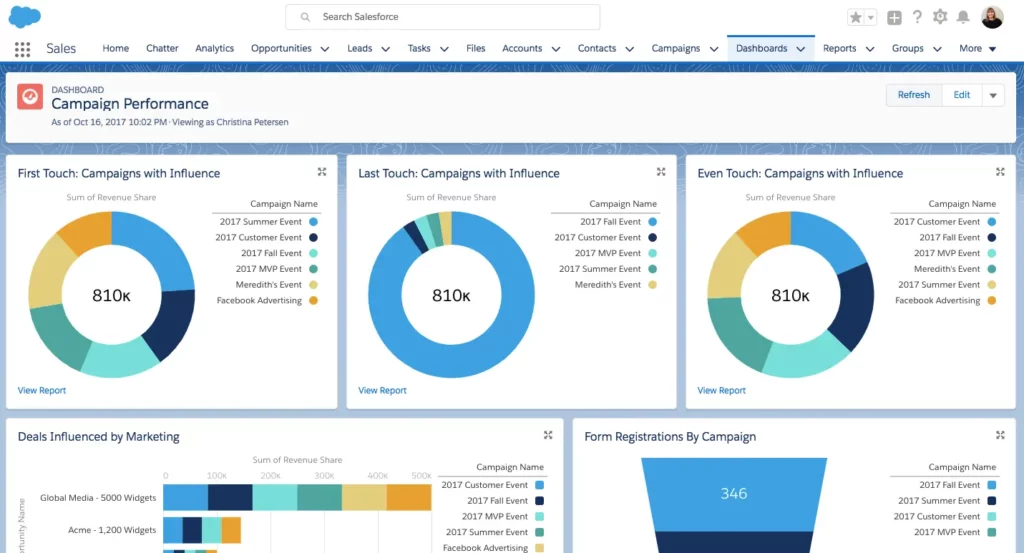In digital marketing, deciphering the impact of your efforts is a critical aspect of ensuring success. Marketing teams are under immense pressure to show the effectiveness of their campaigns. Measuring the ROI of Salesforce campaigns has become important for marketing success. It provides valuable insights into the impact of marketing efforts on revenue generation. However, measuring ROI can be a complex task due to the multifaceted nature of campaigns. To evaluate ROI, marketing teams need to adopt a strategic approach with a clear goal setting.
This comprehensive guide will provide the strategies for measuring ROI in Salesforce campaigns. This can help marketing teams to optimize resource utilization and drive business growth.
Importance of ROI Measurement in Salesforce Campaigns
First of all, let’s highlight the importance of measuring ROI in Salesforce campaigns. Understanding the effectiveness of your campaigns is paramount. It’s not just about the numbers; it’s about making informed decisions and allocating resources.
Why is measuring ROI important?
There are many reasons why measuring ROI is important for marketing teams. Here are a few:
The value of marketing: ROI provides a clear and concise way to communicate the value of marketing to senior management. This can help to justify marketing budgets and secure funding for future campaigns.
Marketing spend: ROI can be used to identify which marketing channels are most effective. This information can then be used to optimize marketing spend and focus resources on the channels.
Improve campaign performance: ROI can be used to track the performance of marketing campaigns over time. This information can then be used to make adjustments to campaigns to improve their effectiveness.
How to measure ROI in Salesforce Campaigns

There are a number of different ways to measure ROI in Salesforce Campaigns. The best method for you will depend on the specific goals of your campaigns and the data that is available to you. However, some of the most common methods include:
Revenue generated from the campaign: This is the most straightforward method of measuring ROI. However, it can be difficult to isolate the revenue generated from a particular campaign.
Number of leads generated from the campaign: This is a good metric to use if your goal is to generate leads. However, it is important to track the quality of the leads as well as the quantity.
Conversion rate: This is the percentage of leads that are converted into customers. This is a good metric to use if your goal is to generate sales.
Strategies for ROI Measurement in Salesforce Campaigns
Now, let’s discuss the strategies that will help you to measure ROI within Salesforce.
1. Use Salesforce Analytics
Salesforce provides analytics tools designed to offer in-depth insights into your campaigns. These tools enable you to dissect data, uncover patterns, and optimize marketing strategy.
2. Implement Attribution Modeling
Understanding the journey your prospects take before converting is crucial. Attribution modeling allows you to assign value to each touchpoint in the customer journey. It provides a holistic view of the impact of your Salesforce campaigns. This nuanced approach ensures that credit is given where it’s due. It also refines your marketing strategy.
3. Monitor Customer Journey Metrics
Track the metrics that matter throughout the customer journey. Keep a close eye on metrics such as lead conversion rates, customer acquisition costs, and customer lifetime value. This provides a comprehensive view of your campaign’s success.
4. Regular Evaluation and Adjustment
ROI measurement is not a one-time task; it’s an ongoing process. Regularly evaluate the performance of your Salesforce campaigns. This approach allows you to capitalize on successful strategies and pivot away from underperforming ones.
5. Revenue Generated from the Campaign:
This straightforward method involves dividing the revenue generated from the campaign by the total cost of the campaign. While simple, isolating the revenue attributable to a specific campaign can be challenging.
6. Number of Leads Generated from the Campaign:
This method is particularly useful when the primary goal is lead generation. However, it’s crucial to assess the quality of leads alongside their quantity.
7. Conversion Rate:
This metric measures the percentage of leads that are successfully converted into customers. It’s highly relevant when the goal is to drive sales.
Conclusion:
Measuring ROI in Salesforce campaigns is not just about proving success. It’s about setting on a journey of continuous improvement. The strategies involve identifying key metrics, using Salesforce analytics, and using attribution modeling. Also evaluating and adjusting your approach can not only measure success but also drive it. The ability to adapt and refine your strategies based on real data is the key to staying ahead. Use these strategies to get the true potential of your Salesforce campaigns and pave the way for sustained success.
If you need any assistance in Salesforce, contact us, and we have a team of experts to assist you.




